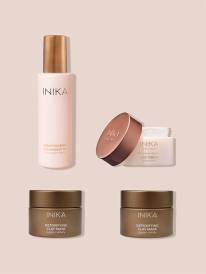Reducing The Health Risks From Drinking Alcohol

Reducing The Health Risks From Drinking Alcohol
Release of the latest Australian guidelines for consultation
The National Health and Medical Research Council (NHMRC) has released newly revised guidelines on reducing health risks from drinking alcohol. The draft guidelines are open for public comment until 24 February 2020.
"We're not telling Australians how much to drink. We're providing advice about the health risks from drinking alcohol so that we can all make informed decisions in our daily lives. This advice has been developed over the past three years using the best health evidence available," says Professor Anne Kelso, CEO of the National Health and Medical Research Council.
"In 2017 there were more than 4,000 alcohol-related deaths in Australia, and across 2016/17 more than 70,000 hospital admissions. Alcohol is linked to more than 60 medical conditions, particularly numerous cancers. So, we all need to consider the risks when we decide how much to drink.
"We recommend that healthy men and women reduce the risk of harm by drinking no more than 10 standard drinks per week and no more than 4 standard drinks on any one day.
"However, we are not saying that this is a level completely eliminates risk. The less you choose to drink, the lower your risk of alcohol-related harm. For some people not drinking at all is the safest option.
"We recommend that adolescents under the age of 18 do not drink. There is no known 'safe' or 'no-risk' level of drinking alcohol for children and young people aged under 18 years. Alcohol can harm the way the brain develops, increase the risk of injury and other immediate harms, and increase the risk of developing alcohol-related conditions later in life."
Professor Kelso adds: "To reduce the risk of harm to their unborn child, women who are pregnant or planning a pregnancy should not drink alcohol. For women who are breastfeeding, not drinking alcohol is safest for their baby. We need to keep in mind that while the risk of harm to the fetus is likely to be slight when the mother drinks small amounts of alcohol (less than 1 standard drink per day) there is not enough evidence to know for sure whether the fetus will be safe from harm, even at this low amount of alcohol. That is why we recommend not drinking alcohol."
"These guidelines will help all of us think about our personal risk, and help us to drink responsibly," says Professor Brendan Murphy, Australia's Chief Medical Officer and a member of the NHMRC Council. "They are the result of a comprehensive and robust process over the past three years. They will help me and every Chief Medical Officer in the States and Territories to provide clear messages about the risks of drinking alcohol, to ensure the health of all Australians. If all Australians follow these guidelines we won't stop every alcohol-related death, but we will save thousands of lives, especially younger lives."
The 2019 Guidelines build on the 2009 Guidelines. The revision process has taken three years and included
• analysis of many studies and systematic reviews including thousands of scientific papers studying millions of people over many decades
• a public call for evidence on the benefits as well as the harms of alcohol
• mathematical modelling of the health effects of alcohol and different levels of consumption.
Drafting the guidelines was guided by the NHMRC Alcohol Working Committee and supported by NHMRC staff. The guidelines were reviewed and endorsed by the NHMRC Council which includes the Chief Medical Officers of the Commonwealth and each State and Territory, together with leaders in health, research and ethics.
The draft guideline recommendations are
1. Healthy men and women:
To reduce the risk of harm from alcohol-related disease or injury for healthy men and women, drink no more than 10 standard drinks per week and no more than 4 standard drinks on any one day. The less you choose to drink, the lower your risk of alcohol-related harm. For some people not drinking at all is the safest option.
2. Children and young people:
To reduce the risk of injury and other harms to health, children and young people under 18 years of age should not drink alcohol.
3. Pregnancy and breastfeeding:
To reduce the risk of harm to their unborn child, women who are pregnant or planning a pregnancy should not drink alcohol.
For women who are breastfeeding, not drinking alcohol is safest for their baby.
A standard drink contains 10 grams of alcohol, so for example is a nip of spirits, a small (100mL) glass of wine, or a midi or pot of beer.
Comprehensive supporting information is available online at www.nhmrc.gov.au/alcohol
NHMRC provides advice to government and the community on a wide range of matters including, in recent years, nutrition, infant feeding, infection control, blood lead levels, drinking water quality and the health effects of wind turbines and fluoridating drinking water.
The National Health and Medical Research Council (NHMRC) has released newly revised guidelines on reducing health risks from drinking alcohol. The draft guidelines are open for public comment until 24 February 2020.
"We're not telling Australians how much to drink. We're providing advice about the health risks from drinking alcohol so that we can all make informed decisions in our daily lives. This advice has been developed over the past three years using the best health evidence available," says Professor Anne Kelso, CEO of the National Health and Medical Research Council.
"In 2017 there were more than 4,000 alcohol-related deaths in Australia, and across 2016/17 more than 70,000 hospital admissions. Alcohol is linked to more than 60 medical conditions, particularly numerous cancers. So, we all need to consider the risks when we decide how much to drink.
"We recommend that healthy men and women reduce the risk of harm by drinking no more than 10 standard drinks per week and no more than 4 standard drinks on any one day.
"However, we are not saying that this is a level completely eliminates risk. The less you choose to drink, the lower your risk of alcohol-related harm. For some people not drinking at all is the safest option.
"We recommend that adolescents under the age of 18 do not drink. There is no known 'safe' or 'no-risk' level of drinking alcohol for children and young people aged under 18 years. Alcohol can harm the way the brain develops, increase the risk of injury and other immediate harms, and increase the risk of developing alcohol-related conditions later in life."
Professor Kelso adds: "To reduce the risk of harm to their unborn child, women who are pregnant or planning a pregnancy should not drink alcohol. For women who are breastfeeding, not drinking alcohol is safest for their baby. We need to keep in mind that while the risk of harm to the fetus is likely to be slight when the mother drinks small amounts of alcohol (less than 1 standard drink per day) there is not enough evidence to know for sure whether the fetus will be safe from harm, even at this low amount of alcohol. That is why we recommend not drinking alcohol."
"These guidelines will help all of us think about our personal risk, and help us to drink responsibly," says Professor Brendan Murphy, Australia's Chief Medical Officer and a member of the NHMRC Council. "They are the result of a comprehensive and robust process over the past three years. They will help me and every Chief Medical Officer in the States and Territories to provide clear messages about the risks of drinking alcohol, to ensure the health of all Australians. If all Australians follow these guidelines we won't stop every alcohol-related death, but we will save thousands of lives, especially younger lives."
The 2019 Guidelines build on the 2009 Guidelines. The revision process has taken three years and included
• analysis of many studies and systematic reviews including thousands of scientific papers studying millions of people over many decades
• a public call for evidence on the benefits as well as the harms of alcohol
• mathematical modelling of the health effects of alcohol and different levels of consumption.
Drafting the guidelines was guided by the NHMRC Alcohol Working Committee and supported by NHMRC staff. The guidelines were reviewed and endorsed by the NHMRC Council which includes the Chief Medical Officers of the Commonwealth and each State and Territory, together with leaders in health, research and ethics.
The draft guideline recommendations are
1. Healthy men and women:
To reduce the risk of harm from alcohol-related disease or injury for healthy men and women, drink no more than 10 standard drinks per week and no more than 4 standard drinks on any one day. The less you choose to drink, the lower your risk of alcohol-related harm. For some people not drinking at all is the safest option.
2. Children and young people:
To reduce the risk of injury and other harms to health, children and young people under 18 years of age should not drink alcohol.
3. Pregnancy and breastfeeding:
To reduce the risk of harm to their unborn child, women who are pregnant or planning a pregnancy should not drink alcohol.
For women who are breastfeeding, not drinking alcohol is safest for their baby.
A standard drink contains 10 grams of alcohol, so for example is a nip of spirits, a small (100mL) glass of wine, or a midi or pot of beer.
Comprehensive supporting information is available online at www.nhmrc.gov.au/alcohol
NHMRC provides advice to government and the community on a wide range of matters including, in recent years, nutrition, infant feeding, infection control, blood lead levels, drinking water quality and the health effects of wind turbines and fluoridating drinking water.
MORE



